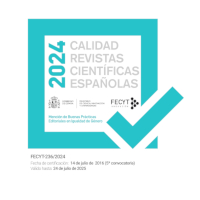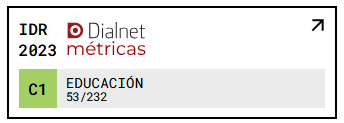Good practices as a resource for community action: identification and search criteria
DOI:
https://doi.org/10.18172/con.2773Keywords:
Best practices, community action, social pedagogy, social education, best practices banksAbstract
In the last times, in scientific research and in the daily work of different organizations and groups, based on the need to make visible the good practices in order to identify those elements that allow to mean them like such, both for its excellence and its ability to make them transferable.
There are different criteria that allow characterizing a good practice, although not always respond to certain principles of selection; they are endowed originality experiences that inspire the concept of a transferable, sustainable and innovative practice that is comparable to certain territories. Hence, some of these initiatives have the aim of providing an overview of types of initiatives that demonstrate new ways to increase creativity, reinventing certain educational activities in order to achieve a more educational, more civic and citizen culture.
This article describes the features that must meet an experience to be considered as a good practice, complementing the proposal with specific indicators for Community action argue. In both cases they are constructed from the proposals made by international bodies, by entities that represent the work of the government and the third sector. While touring Banks of Good Practices managed by institutions, public and private entities is done, etc. with the aim of demonstrating contributions that improve the performances in educational and social key, and increase the quality of life of people and communities.Downloads
References
Agencia andaluza de evaluación educativa (2012). Guía de Buenas Prácticas Docente. Junta de Andalucía: Sevilla. Recuperado de: http://goo.gl/LNyvTW.
Confederación española de organizaciones a favor de las personas con discapacidad intelectual (FEAPS) (2007). Buenas prácticas FEAPS ¿Qué son y cómo se valoran? Recuperado de: http://goo.gl/fmL1Za.
Fundación CEPAIM. Convivencia y cohesión social (2014). Herramientas para la cohesión social. Un proceso de reflexión y sistematización entre buenas prácticas en acción comunitaria intercultural de España y Portugal. Murcia: Fundación CEPAIM.
Marchioni, M. (2014). Políticas sociales y dimensión comunitaria. Revista voces inmigrantes, 20, 10-11.
Mertens, D. M. (2011). Social transformation and evaluation. Evaluation Journal of Australasia, 10(2), 3-10.
Núñez, H., Crespo, E., Úcar, X. y Llena, A. (2014): Enfoques de evaluación orientados a la participación en los procesos de acción comunitaria. Pedagogía social. Revista interuniversitaria, 24, 79-103.
Observatorio internacional de la democracia participativa (2015). IX edición de la distinción OIDP “Buena práctica en participación ciudadana impulsada desde los gobiernos locales”. Recuperado de http://goo.gl/CqMJfF.
Organización Internacional del Trabajo (2003). Directrices sobre buenas prácticas: identificación, análisis, estructuración, difusión y aplicación. Programa internacional para la erradicación del trabajo infantil. Recuperado de: http://goo.gl/Q1Rmf8.
Úcar, X. y Llena, A. (Coords.) (2006). Miradas y diálogos en torno a la acción comunitaria. Barcelona: Graó.
UNESCO (2003). Best practices. Recuperado de http://www.unesco.org/most/bphome.htm#1.
Downloads
Published
How to Cite
Issue
Section
License
The authors retain copyright of articles and authorize Contextos Educativos. Revista de Educación the first publication. They are free to share and redistribute the article without obtaining permission from the publisher as long as they give appropriate credit to the editor and the journal.
Self-archiving is allowed too. In fact, it is recommendable to deposit a PDF version of the paper in academic and/or institutional repositories.












